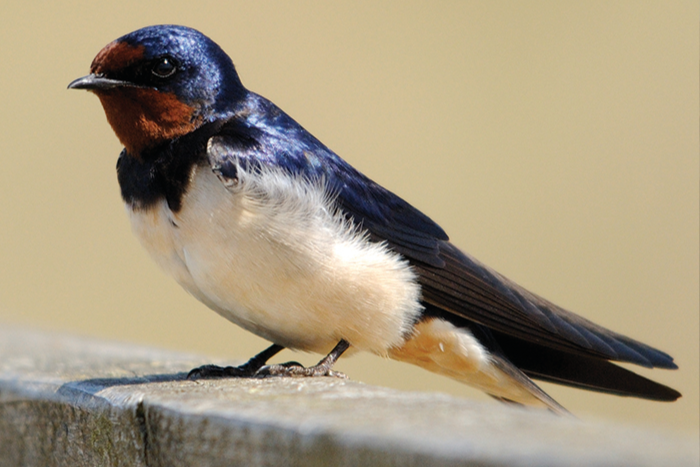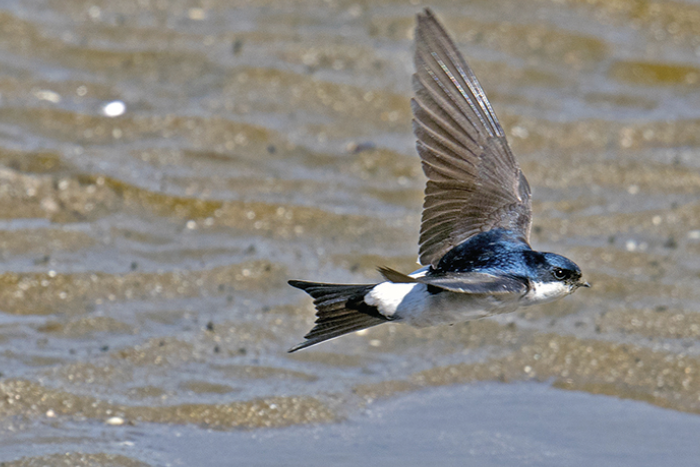
Get ready to welcome birds
Rachel Shaw,
Lincolnshire Wildlife Trust
Many of us have put up bird boxes in the garden. The rectangular boxes with a small round hole in the front.
These are designed for blue tits and great tits in the hope that they replicate a hollow in a tree that these birds would usually use.
Blue tits and great tits aren’t too fussy about the shape of the hollow and readily build their nests in the boxes we provide. But what about some of the most iconic birds of summer: swallows, swifts and house martins?
Swifts, swallows and house martins tell us that it’s summer. They have amazing life-stories that connect us to southern Africa where they spend the winter. They fly all the way back to nest on or in our houses and outbuildings. Watching and hearing these birds soar through the sky is an uplifting spectacle.
However, losing them is fast becoming a real threat. All three are struggling and, house martins and swifts are in serious decline. Swifts and house martins were recently added to the UK Red List of Conservation Concern. The Red List keeps track of how different species are doing, any that are rated ‘red’ need urgent action. It is estimated that over half of our house martin population has been lost since 1969 and that almost 60% of UK swifts have disappeared over the last 25 years.
There are many reasons for this including huge declines of their insect food, the loss of habitats and nesting sites, and the impacts of climate change – with extreme weather affecting breeding cycles and migration. But because these birds live amongst us, we can help in our own homes and gardens.
The Wildlife Trusts encouraging gardeners to install nest boxes and create habitats that boost insect numbers to help swallows, swifts, and martins and getting started now means your space will be ready when the birds return.
There are three top tips on how to help:
1. Create a ‘bog garden’ with plants like marsh-bedstraw and purple loosestrife. Bog gardens provide valuable habitat for a wealth of insects that could form a vital source of food for birds. A bog garden or pond with muddy edges will also provide the mud that that swallows and house martins can use to build their nests.
2. Add a swift box to an existing house or include a swift brick in any kind of new build. Ideally, swift boxes face north/north-east to help regulate the internal temperature and are at least five metres above ground. It’s also possible to buy artificial nests for swallows and martins. House martins will nest in groups so having one or two artificial nests may encourage more natural nest building nearby.
3. Let a patch of grass grow long, providing vital habitat and food for insects and other wildlife. This is the simplest of all and will encourage more wildlife into your garden.
Your garden may be small, perhaps it feels like your actions won’t make a difference. Try not to think of your garden in isolation. Incredibly, almost 90% of UK households have a garden, that’s over 20 million gardens that cover a larger area than all 2,300 Wildlife Trust nature reserves combined. Together, by managing our gardens creatively and thoughtfully, we make a huge difference to our struggling wildlife.
For more information about how to help swallows, swifts, martins and other wildlife in your garden go to: www.wildaboutgardens.org.uk There are free downloadable guides and, if you take action for our highflyers, you can add your garden to the UK map. It would be fantastic to see Lincoln represented.
Picture top is a swallow by Amy Lewis while below is a house martin – numbers are declining for both these birds but we can help.

